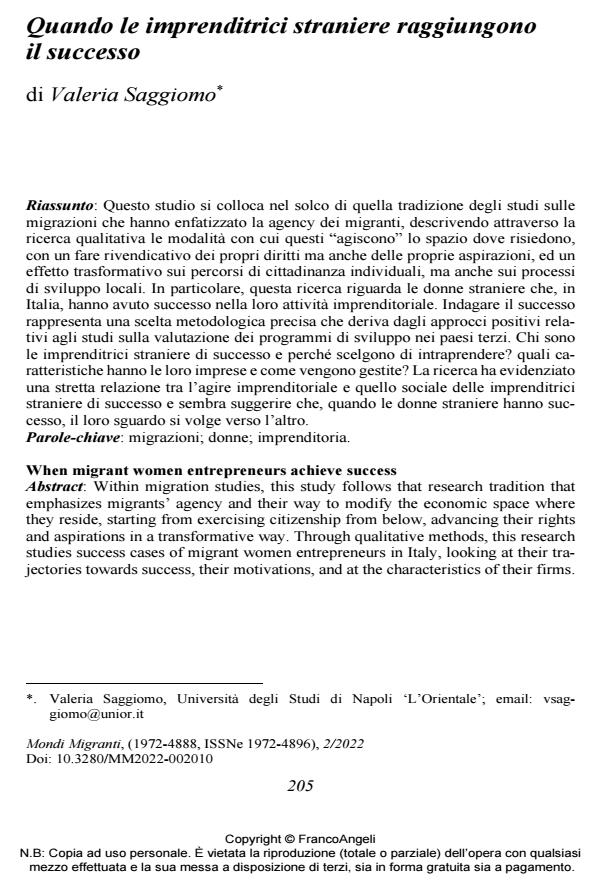When migrant women entrepreneurs achieve success
Journal title MONDI MIGRANTI
Author/s Valeria Saggiomo
Publishing Year 2022 Issue 2022/2
Language Italian Pages 20 P. 205-224 File size 187 KB
DOI 10.3280/MM2022-002010
DOI is like a bar code for intellectual property: to have more infomation
click here
Below, you can see the article first page
If you want to buy this article in PDF format, you can do it, following the instructions to buy download credits

FrancoAngeli is member of Publishers International Linking Association, Inc (PILA), a not-for-profit association which run the CrossRef service enabling links to and from online scholarly content.
Within migration studies, this study follows that research tradition that emphasizes migrants’ agency and their way to modify the economic space where they reside, starting from exercising citizenship from below, advancing their rights and aspirations in a transformative way. Through qualitative methods, this research studies success cases of migrant women entrepreneurs in Italy, looking at their trajectories towards success, their motivations, and at the characteristics of their firms. Results have highlighted a tight relation between entrepreneurial and social activism of success women entrepreneurs and seems to suggest the importance of elements of corporate social responsibility in the firms or in the biographies of success women entrepreneurs.
Keywords: migration; women; entrepreneurs.
Valeria Saggiomo, Quando le imprenditrici straniere raggiungono il successo in "MONDI MIGRANTI" 2/2022, pp 205-224, DOI: 10.3280/MM2022-002010